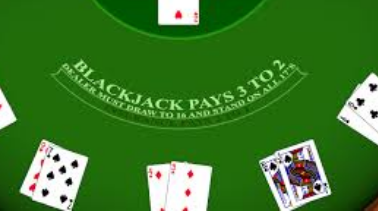
Playing online or in a casino, these suggestions can help you land big wins, whether you’re playing basic blackjack for beginners or you’re already good at it.
To win at blackjack, you must be closer to the number 21 than the dealer, without passing that number. Sounds easy doesn’t it, but the key to playing blackjack for beginners is understanding the odds and the basic strategy for when to draw another card (hit) and when to stop (stay). In this guide, blackjack for beginners, you will find the basic rules, strategies and terminology of playing blackjack so that you can feel comfortable playing.
Blackjack Basics For Beginners
Cards, money, cocktails. As a game, blackjack only looks cool in casinos. If you are new to the game, here’s a quick guide to get you on the right track at the gambling table. We wish you a little better luck than Clark Griswold.
The purpose of blackjack is for the player’s hand to add up to as close to 21 as possible without busting. Numbered cards count as the number simple.
To start the game, each player is dealt two cards (face up), usually with four, six, or eight decks (although you can find one and two deck blackjack at the higher stakes). The dealer is also dealt two cards with only one card face up. The dealer has a big advantage in the last act.
A player gets an ace and 10 (or face cards) immediately gets the number 21, also known as blackjack. Players are paid outright in a 3-to-2 betting ratio (bet $ 200 and win $ 300), although more casinos use the lower 6-to-5 payout (bet $ 500 to win $ 600). However, if the dealer also gets blackjack then the result will be a draw – no win, no loss.
Blackjack for beginners is quite simple: If your hand is closer to 21 than the dealer’s then you win. Also, if the dealer is busting (over 21), you win. It sounds easy, but there are a lot more to keep in mind.
Bets and Conditions in Blackjack For Beginners
Hint: Maybe you’ve seen someone playing blackjack in a movie say “hit me.” That means you take another card in an attempt to get close to 21. A finger or hand tap also works, and the dealer will give you another shot.
Stand: You “stand” when you don’t want another card. Usually, this happens when you get 17 or more (and sometimes lower depending on the dealer’s card). Waving as if to say “no” will do the trick.
Soft: If you have a “soft 17,” that means you have an ace and 6. Since the ace counts as 1 or 11, this hand can be worth 7 or 17 and the player won’t be busting with a hit, because 10 won’t make a hand in Your hand is greater than 21. The dealer must draw cards until they reach 17 or higher, but usually have to hit a “soft 17”. If the numbers are all the same as 17 then the player will benefit more. The regulations in each casino are different which require the dealer to move on soft 17.
Insurance: A valid bet if the dealer’s face-up card is an ace. Players can usually bet half of their bets and “insure” a portion of their bets against Blackjack. This is a trap bet and a losing bet over the long term.
Split: If you are dealt two of the same cards, you are allowed to split the bet into 2 bets by placing the second bet. It’s important to know the basic strategy for knowing the best odds in terms of knowing when and what cards to deal (see chart). Have two 10 cards? Never split – the number 20 already has a high chance of winning. Two cards 5? Another card you have to keep. A card worth 10 has a good chance of getting another high card – hope ace – for the winner and Blackjack.
Double down: Players are allowed to (and must) double their bet on certain hands for extra score. If the player doubles down the player will only get 1 additional card, so if you get 3, and have 13, you will lose. Doubling is common if you have 9, 10 or 11 cards because of the high probability of getting another high card. But other circumstances need to be considered before taking this step. Knowing the basic strategy will help.